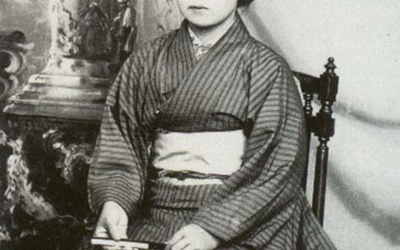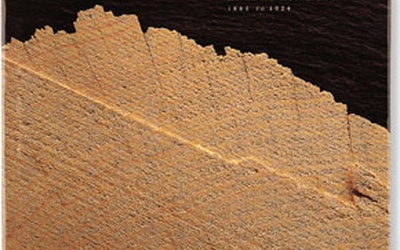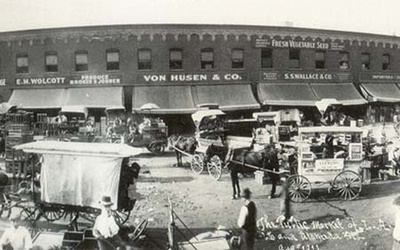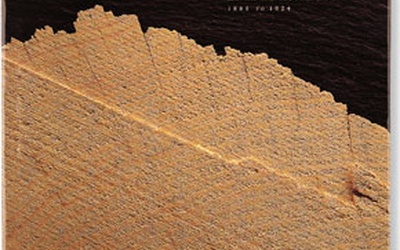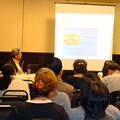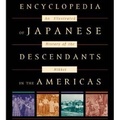
Akemi Kikumura Yano
Dra Akemi Kikumura-Yano, CEO del Museo Nacional Japonés Americano y responsable del Proyecto del Legado Nikkei (Nikkei Legacy Project) que produce el sitio de internet Discover Nikkei. Posee un doctorado en antropología de la Universidad de California en Los Angeles y es autora del libro, Through Harsh Winters: The Life of a Japanese Immigrant Woman .
Última actualización febrero de 2008
Historias de Este Autor
Issei Pioneers - Hawaii and the Mainland 1885-1924 - Part 15
11 de abril de 2011 • Akemi Kikumura Yano
Read Part 14 >>FAMILY LIFE : MARRIAGEEiji Uragami anxiously awaited the arrival of his young bride Kinuyo Shintaku. He had been in the United States for twelve years, since 1903, and was thirty-four years old. “I an getting tired of life as a bachelor,” he wrote to Kinuyo. “It’s lonely coming home to an empty house after a long day’s work.” Candidly he complained, “Sleeping alone for so many years has been such an inconvenience. I’ll try my best to …
Issei Pioneers - Hawaii and the Mainland 1885-1924 - Part 14
4 de abril de 2011 • Akemi Kikumura Yano
Read Part 13 >>MASUO YASUI AND THE YASUI BROTHERS STOREMasuo Yasui was one of these student-laborers who would play a vital part in the development of the Hood River, Oregon Japanese community,1 In 1903, Masuo Yasui arrived in the United States to attend school in Oregon, having already studied English at the Kojo Kan school in Japan. His father, Shintaro, and his two elder brothers, Taiitsuro and Renichi, had come to America before him. After working as a cook’s helper …
Issei Pioneers - Hawaii and the Mainland 1885-1924 - Part 13
28 de marzo de 2011 • Akemi Kikumura Yano
Read Part 12 >> MAINLAND TRADES AND SMALL BUSINESS By 1910, vigorous Japanese communities were firmly established. The majority of these business establishments was started with a capital investment of less than a thousand dollars and run by the proprietors themselves. Undoubtedly, many of the early business ventures relied on the tanomoshi-ko (a rotating credit association), or other means of mutual support and protection. In 1909, the Immigration Commission reported between 3,000 to 3,500 Japanese owned business in the Western …
Issei Pioneers - Hawaii and the Mainland 1885-1924 - Part 12
21 de marzo de 2011 • Akemi Kikumura Yano
Read Part 11 >>ALIEN LAND LAWSIn an attempt to drive the Japanese out of agriculture, California had passed the first Alien Land Law in 1913 aimed specifically at the Japanese. The Law prohibited “aliens ineligible to citizenship” and companies with a majority of Japanese stockholders from purchasing agricultural land or bequeathing or selling already owned agricultural land to a fellow immigrant. The law also restricted land leases to a period of three years. An Issei man from Cortez, California explained …
Issei Pioneers - Hawaii and the Mainland 1885-1924 - Part 11
14 de marzo de 2011 • Akemi Kikumura Yano
Read part 10 >> DESERTS TO FARMLANDS Resolved to become The soil of the foreign land, I settle down.1 Throughout the Pacific and Rocky Mountain states of America, the Japanese immigrants farmed. In 1909, agriculture was by far the biggest employer of Issei laborers, with more than 38,000 employed as field hands at the height of the harvest. Approximately 95 percent of these Japanese farm laborers worked in California. …
Issei Pioneers - Hawaii and the Mainland 1885 - 1924 - Part 10
7 de marzo de 2011 • Akemi Kikumura Yano
Read Part 9 >> LABOR CONTRACTORS Unlike Hawaii, where plantation workers had direct contract with their employers, on the Mainland, the Japanese workers often did not know who they worked for. Jobs were secured through labor contractors who acted as intermediaries between American employers and Japanese laborers. The contractors made enormous profits, extracting a daily commission from the workers’ wages with some providing commodities and services to the workers. There were more than 20 Japanese bosses who supplied Japanese workers …
Issei Pioneers - Hawaii and the Mainland 1885-1924 - Part 9
28 de febrero de 2011 • Akemi Kikumura Yano
Read Part 8 >>ANTI-JAPANESE SENTIMENTThough the Issei had come from various prefectures with different customs and dialects, their “oneness” as Japanese became reinforced by the color consciousness of America. Upon arrival in America, there were almost immediately faced with racism, prejudice, and segregation. In 1905, when Nisuke Mitsumori landed in San Francisco, he was met by a group of fifteen to twenty youngsters who routinely came to “rough up” the Japanese arriving at the port. “Let’s go. Japs have come,” …
Issei Pioneers - Hawaii and the Mainland 1885-1924 - Part 8
21 de febrero de 2011 • Akemi Kikumura Yano
Read Part 7 >>JOURNEY TO THE MAINLAND: MIGRANTS TO SETTLERSWhile many Japanese stayed on the Island and made Hawaii their home, many also used Hawaii as a stepping stone to the Mainland, where wages were double. Between 1890 and 1900, Japanese started to arrive in greater numbers in the port cities of San Francisco and Seattle. At the same time, thousands of southern and eastern Europeans landed in New York’s Ellis Island. It was a period of great world-wide migration …
Issei Pioneers - Hawaii and the Mainland 1885-1924 - Part 7
14 de febrero de 2011 • Akemi Kikumura Yano
Read Part 6 >>THE START OF PRIVATE ENTERPRISE AND OTHER VENTURESOne of the earliest enterprises to start on the plantations was the public bath house (ofuro). The bath house operators charged the workers a monthly fee while the plantations supplied the fuel, water, and building. Each camp had an ogokku (chief cook) or a couple, who prepared meals for 20 to 30 men at a monthly fee. Kosuke Teruya remembered “There weren’t any tasty foods” when he worked at Waipahu. …
Issei Pioneers - Hawaii and the Mainland 1885-1924 - Part 6
7 de febrero de 2011 • Akemi Kikumura Yano
Read Part 5 >>PLANTATION STRIKE OF 1920After the 1909 Strike, the workers’ wages stagnated at the same level while the cost living continued to rise. By the end of World War 1, the monthly cost of living had risen by as much as 45 percent.1 Proposals were sent to the HSPA asking for higher wages, nurseries for children of workers and changes in the bonus system, but their demands were summarily rejected. By 1919, labor organizations had formed on Maui, …

